
Dogwood Borer: A Not So New Pest
DOWNLOADSeptember 1, 2023 - Darla Knuth and Deborah McCullough, Department of Entomology and Department of Forestry, Michigan State University
Dogwood borers can feed on a variety of trees in forests, orchards and even in your neighborhood!
The dogwood borer Synanthedon scitula (Harris) is a clearwing moth that is native to North America. This insect can colonize and feed on a wide range of trees, including species that grow in forests, landscapes, urban settings and orchards. Flowering dogwood, oak, and apple are all potential hosts of this moth. Given its broad host range, everyone from apple producers to urban landscapers may find themselves in a situation where they encounter this pest. While an array of hosts may be infested, signs of infestation and treatment options are similar.
Dogwood borer have long been considered an important pest of flowering dogwoods (e.g. Cornus florida) because they cause damage like sloughing bark, which can reduce the aesthetic value of the tree. More recently, dogwood borer has become a significant pest of apples because it infests some of the dwarf rootstocks that are used in modern high-density apple production. Although trees are rarely killed, feeding by dogwood borer will stress both the trees and the people responsible for managing them. Fortunately, there are effective options to manage dogwood borer infestations.
Correctly identifying dogwood borer is the critical first step for managing this pest. Dogwood borer damage and the larvae can be confused with those of other native borers. This guide can help you to identify dogwood borer and develop an effective strategy for management.
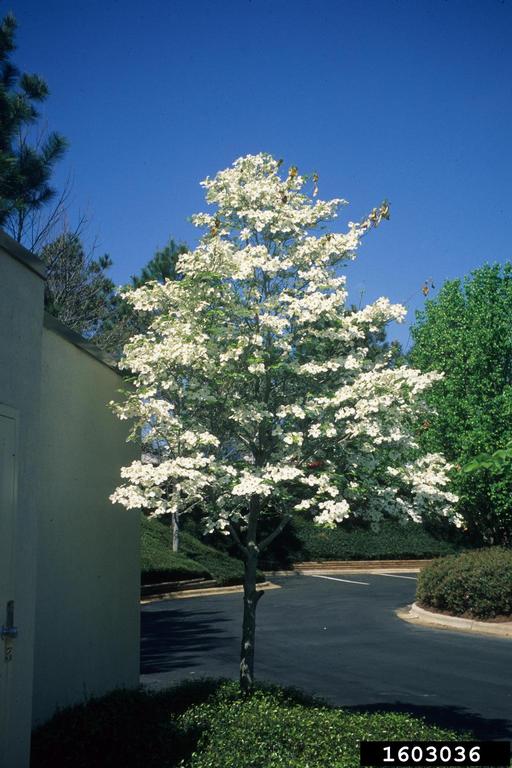
Identification
Dogwood borers are clearwing moths that belong to the family Sesiidae. In contrast to most moths and butterflies, adult clearwing moths do not have colorful scales on their wings. Instead, the adults appear wasp-like with striking veins in clear wings. Adults are bluish black with yellow markings, including a yellow band on the fourth abdominal segment. Dogwood borer can sometimes be confused with the closely related peach tree borer (Synanthedon exitiosa) and lesser peach tree borer (S. pictipes). However, adult dogwood borers are smaller than the other two species with a wingspan of no more than one inch and a body length of approximately one inch.
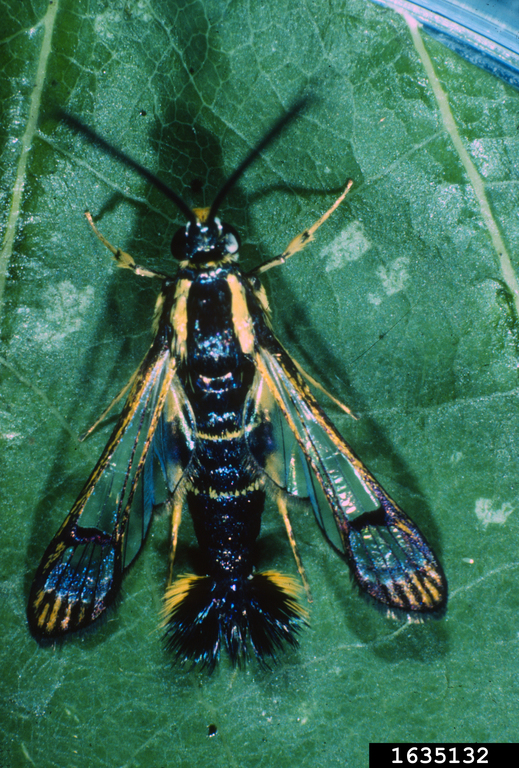
Dogwood borer larvae are creamy-white with a reddish head. They feed internally within trees and will be close to half an inch in length when fully developed. When development is complete, the larvae spin silken cocoons and pupate inside the tree. Cocoons are light brown and slightly under half an inch in length.
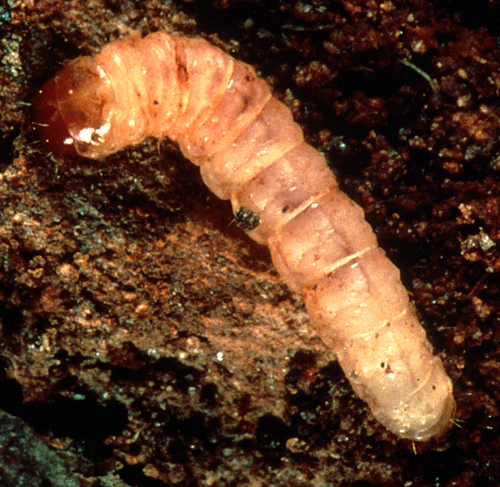
Dogwood borer eggs are hexagonal and initially pale yellow but darken to a deep brown as they mature. Eggs are often laid on injured bark, pruning cuts, wounds and burr knots. Burr knots are the beginning of new root growth that commonly appears at grafts and can be a particular concern for apple growers.
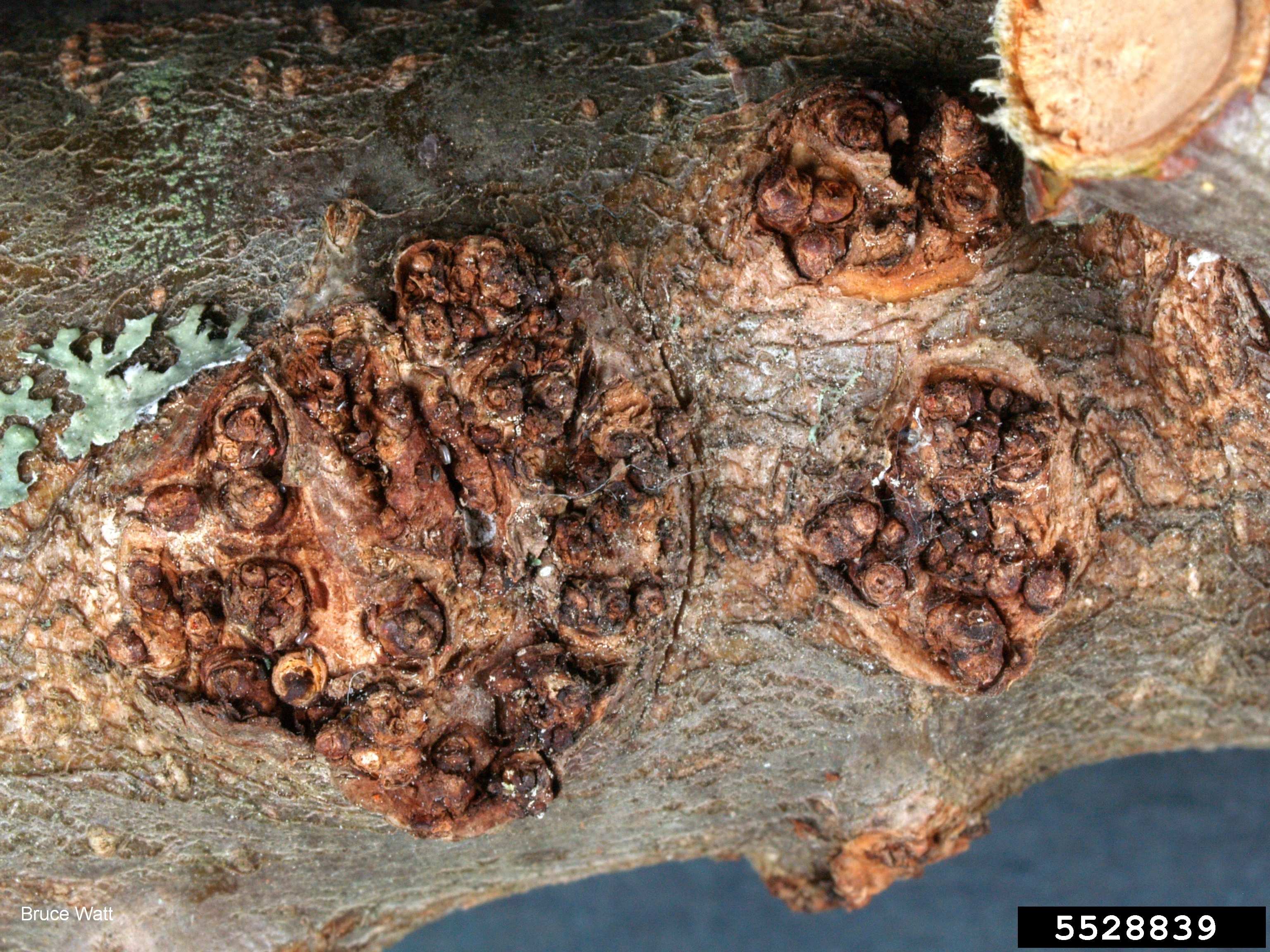
Where to Find Dogwood Borer
The primary host of dogwood borer is flowering dogwood (Cornus florida), which should come as no surprise given its name. However, this borer can attack many other trees including oak, mountain ash, hickory, birch, apple, cherry, and pecan. Dogwood borer can also infest other hardwoods, shrubs, and vines. The geographic range of dogwood borer is quite broad, encompassing most of the eastern United States and southeast Canada. Recently, its range has begun to expand into other apple growing regions, including the Pacific Northwest.
Lifecycle and Reproduction
In Michigan, dogwood borer has one generation per year, while in more southern regions of the U.S., two or three generations can occur annually. Adults are active from May to September in Michigan and the Upper Midwest. Eggs hatch within 8-10 days of being laid. Larvae feed in tunnels called galleries in the cambium and phloem tissue inside the tree. Larvae generally cannot chew through thick outer bark on tree trunks and typically gain entry into the tree through thin or damaged bark. Entry sites may include the crotches of small branches, wounds, where branches rub together, or on burr knots.
Larval feeding damages the vascular tissue that is essential for moving water and nutrients within the tree. Dogwood borer infestations are often chronic, and cumulative damage from infestations can eventually result in yield loss, dieback and even tree mortality.
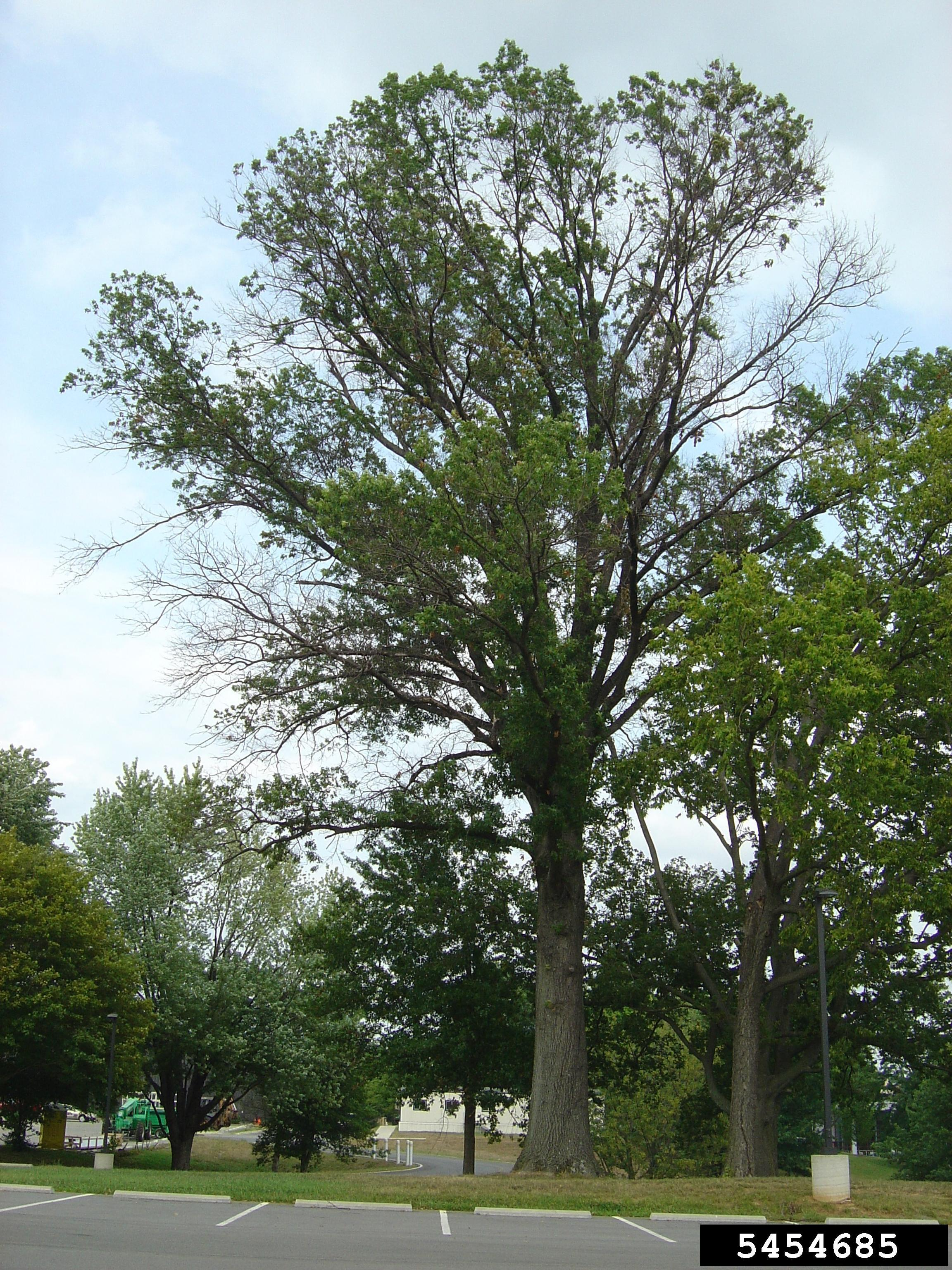
Detection and Monitoring
Dogwood borer can be a difficult pest to detect, especially in new or recent infestations when the population is at low densities. Signs of infestation can include loose bark, dying canopy branches, or reddish excrement (frass) on the bark.
In orchards or sites where dogwood borers are present, pheromone traps can aid in detecting and monitoring adult activity. Traps consist of a sticky board with a rubber pheromone dispenser placed directly on the board. Ideally, traps should be hung in trees approximately 6 feet high. Lures should be replaced in accordance with manufacturer guidance.
It is important to note that other borers, including the peach tree borer, can also be attracted to these traps. Proper identification of trapped moths is essential.
Knowing when adult moths are flying can help with management decisions, especially if insecticides are needed.
Management Options for Dogwood Borer
Numerous management options are available for dogwood borer.
Simply, pruning out and destroying infested branches can be effective in some cases. It is important to avoid pruning or causing other wounds when adult moths are active. In other words, pruning should occur in winter and not in summer. If pruning must be done in the summer, applying pruning paint over wounds may help reduce the risk of re-infestation.
Covers and barriers may be effective, especially in orchards or other areas with a high density of potential host trees. Barriers can be placed over rootstocks, burr knots or other areas on the tree that are susceptible to infestation. The physical barrier can prevent egg laying or larval colonization. Barriers come in many forms, including gauze, a layer of latex paint, Tyvek material, and EVA (rubber-like material). One concern with these barriers, however, is that they often need to be replaced annually, depending on the weather. Applying and re-applying the barriers will be labor intensive when many trees are involved. Alternatively, mounding soil up and around the base of the tree to cover the rootstock can function as an effective natural barrier.
Protecting trees with insecticides may be needed in some sites with chronic or high densities of dogwood borer. Pyrethroid insecticide products can be sprayed on trunks and branches of trees during peak moth flight. It is essential to monitor adult moth activity with pheromone traps to ensure spray timing is correct. A second application may be needed approximately four weeks later to control mid-summer moth activity.
While properly timed insecticide sprays can provide effective control of dogwood borer, undesirable effects of insecticide sprays on non-target insects such as pollinators and predators should be considered. Specifically, sprays during bloom should be avoided. Applications of pyrethroids or other insecticides in fruit orchards or to trees in residential areas are highly regulated. Be sure to follow all directions on the label of the insecticide product.
If you decide to take action, it is important to tailor management options to your situation. Use multiple management strategies to maximize effectiveness in high value or heavily infested trees. If you need further resources or have questions about what would be best for you, please reach out to your local county extension office.



 Print
Print Email
Email
